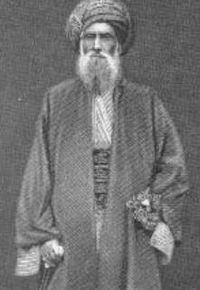
1861 to 1865 A.D.
When the American Civil War broke out in 1861, American cotton supplies to England were cut off. Consequently, Bombay's cotton exports to England doubled. Fortunes were made. Some famous merchants at the time were Premchand Roychand, Jamshedji Jeejeebhoy, Gokuldas Tejpal, Coswasji Jehangir, Readymoney, Jamshedji Tata and David Sassoon.